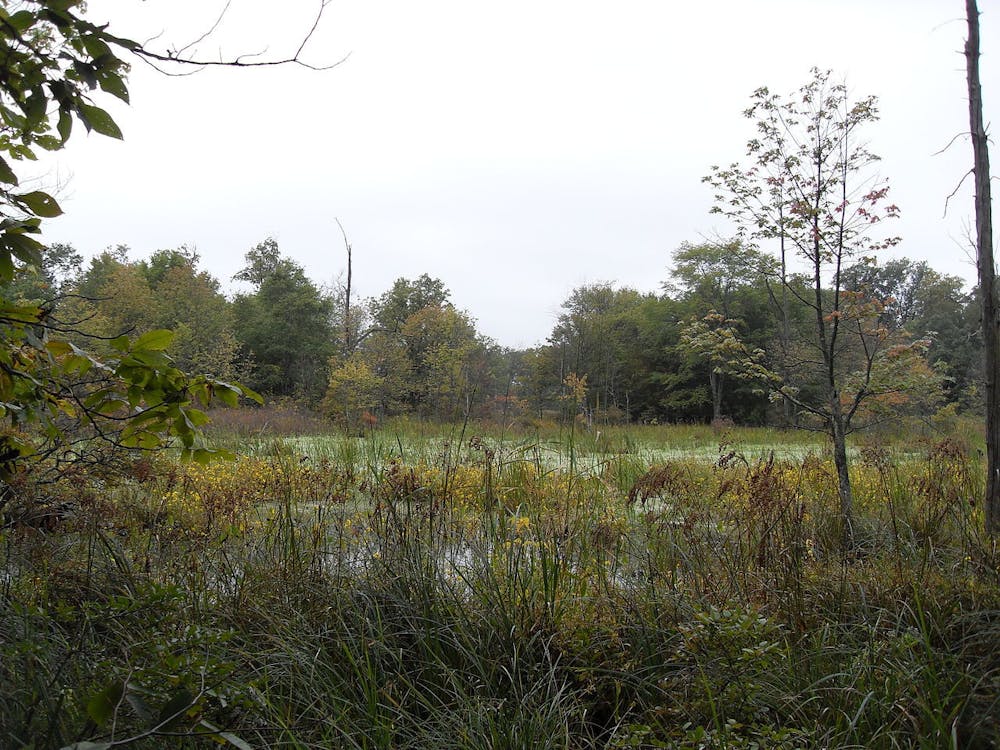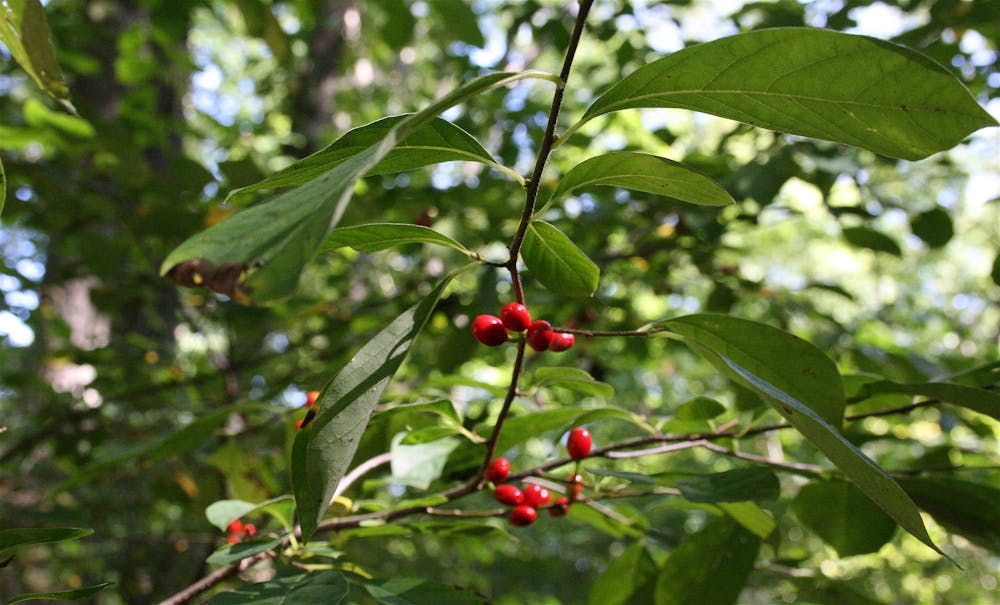By Mike Sherr
Editor-in-Chief
If you are going on a hike in the forest or taking a stroll in a park, look out for the northern spicebush (Lindera benzoin). Its bright red berries almost immediately give it away among the green foliage found during late summer.
The northern spicebush is a relatively common plant throughout the eastern part of the United States. It can grow from Maine to Texas and from Michigan to Florida, but has a somewhat particular soil preference. If the soil isn’t damp enough or is too salty, the spicebush would quickly die.
In New Jersey, this plant can be seen almost everywhere besides the Pine Barrens or at the Jersey Shore. While native plants in general get recognized as important for the environment and biodiversity, the state’s Agriculture Experiment Station lists the northern spicebush as perfect for native gardens.
One of the major hot spots for the northern spicebush in New Jersey is at the Great Swamp National Wildlife Refuge in Basking Ridge. The Great Swamp is a nature preserve in a sea of northern Jersey suburban sprawl. It was created by Congress in 1960 and was the first wilderness area to be created from Department of Interior lands.

A marshy plain at the Great Swamp National Wildlife Refuge (Photo courtesy of Wikimedia Commons/"In the Fall" by Ekem. CC BY-SA 3.0. October 1, 2008).
The Great Swamp can be thought of as an island of biodiversity, housing a large number of endangered and threatened species native to the East Coast. For example, the refuge is home to many endangered reptiles such as the bog turtle (Glyptemys muhlenbergii), the wood turtle (Glyptemys insculpta) and the blue spotted salamander (Ambystoma laterale).
Islands of biodiversity like the Great Swamp are recognized as some of the last places you can find certain native species. They can often be overlooked as useless small patches of nature but they are home to species vital to those ecosystems. While the northern spicebush is not a threatened species whatsoever, it is the only place where the spicebush swallowtail butterfly (Papilio troilus troilus) lays its eggs.
The leaves and the berries of the northern spicebush can be used for a lot of different tasty recipes that can be enjoyed all year long. Native Americans, according to Karl Anderson of the Gloucester County Nature Club, used the leaves, berries, and twigs of the northern spicebush for different culinary purposes.
Both the leaves and the twigs of the bush can be used to make a “spring tonic” that was used during the Civil War when coffee rations ran out. Farmers that lived in Appalachia used to make the tea in order to treat colds and the flu. You only need a handful of branches or leaves steeped in water to make this slightly spicy drink.
With slightly more preparation, the berries can also be used to spice up dishes. Compared to a mix between allspice and pepper, northern spicebush berries can be best eaten dried and sprinkled into breads, pastries or as a dry rub for pork or chicken.
These often overlooked plants found in forests across the state can provide easy pickings for beginner foragers. Next time you are on a hike, make sure to look out for the bright red berries or blooming yellow flowers of the northern spicebush.




